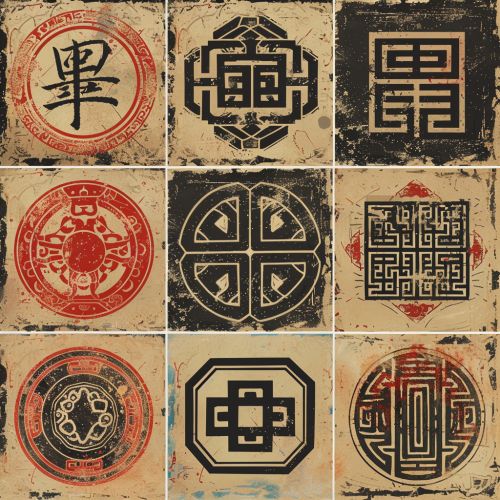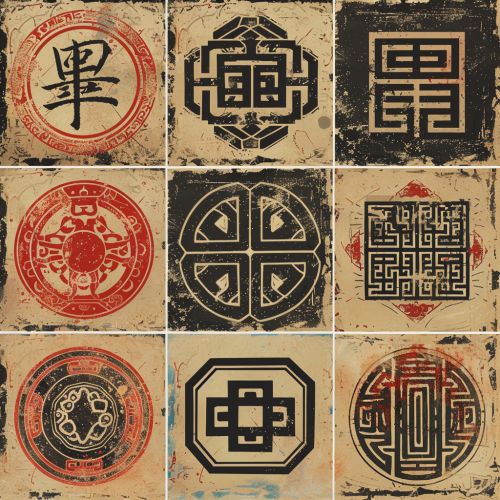King Wen sequence
Introduction
The King Wen sequence is a specific arrangement of the 64 hexagrams of the I Ching, also known as the Book of Changes. This sequence is traditionally attributed to King Wen of Zhou, who is believed to have lived during the late Shang dynasty and the early Zhou dynasty in ancient China. The King Wen sequence is one of the most significant aspects of the I Ching, as it provides a structured way to interpret the hexagrams and their meanings.
Historical Background
The I Ching, or Yijing, is one of the oldest Chinese classical texts, dating back to the Western Zhou period (1046–771 BCE). The text is a divination manual that uses a set of 64 hexagrams, each consisting of six lines that can be either broken (yin) or unbroken (yang). The King Wen sequence is named after King Wen of Zhou, who is traditionally credited with arranging the hexagrams in their current order.
King Wen of Zhou
King Wen, also known as Ji Chang, was the founder of the Zhou dynasty and is often revered as a sage-king. According to legend, he restructured the hexagrams of the I Ching while he was imprisoned by the last king of the Shang dynasty. His arrangement of the hexagrams is said to reflect a deeper understanding of the natural and social order.
Structure of the King Wen Sequence
The King Wen sequence arranges the 64 hexagrams in a specific order that is believed to reveal the dynamic processes of change in the universe. Each hexagram is composed of two trigrams, which are three-line figures that represent various natural phenomena and human conditions.
Hexagrams and Trigrams
A hexagram is formed by stacking two trigrams, each of which can be one of eight possible combinations of yin and yang lines. The eight trigrams are:
- Qian (☰) - Heaven
- Kun (☷) - Earth
- Zhen (☳) - Thunder
- Xun (☴) - Wind
- Kan (☵) - Water
- Li (☲) - Fire
- Gen (☶) - Mountain
- Dui (☱) - Lake
Each hexagram is identified by a number from 1 to 64, and each has a unique name and meaning. The King Wen sequence arranges these hexagrams in a way that is believed to reflect the cyclical nature of the universe.
Interpretation and Usage
The King Wen sequence is used in various ways, including divination, philosophical inquiry, and moral instruction. When used for divination, a practitioner typically casts yarrow stalks or coins to generate a hexagram, which is then interpreted according to its position in the King Wen sequence.
Divination
In divination, the hexagram generated by the casting process is analyzed to provide insight into a question or situation. The lines of the hexagram may change, transforming one hexagram into another and revealing the dynamic nature of the situation. The King Wen sequence helps to contextualize these changes and provides a framework for understanding the underlying patterns.
Philosophical Inquiry
The I Ching and the King Wen sequence have been used by Chinese philosophers for centuries to explore concepts such as change, harmony, and the interplay of opposites. The sequence is seen as a microcosm of the universe, encapsulating the principles of yin and yang and the Daoist concept of the Dao, or the Way.
Moral Instruction
The hexagrams and their associated texts often contain moral lessons and advice for proper conduct. The King Wen sequence is used to illustrate the consequences of actions and the importance of aligning oneself with the natural order.
Mathematical and Logical Properties
The King Wen sequence has been the subject of mathematical and logical analysis, revealing interesting patterns and properties. For example, some researchers have noted that the sequence exhibits a form of binary counting, with each hexagram representing a unique combination of six binary digits.
Binary Representation
Each line in a hexagram can be represented as a binary digit, with an unbroken line (yang) as 1 and a broken line (yin) as 0. This allows the hexagrams to be expressed as six-bit binary numbers, ranging from 000000 (hexagram 2, Kun) to 111111 (hexagram 1, Qian).
Symmetry and Transformation
The King Wen sequence also exhibits symmetrical properties and patterns of transformation. For example, certain pairs of hexagrams are inverses of each other, with the lines of one hexagram being the opposite of the other. These relationships highlight the interconnectedness of the hexagrams and the cyclical nature of change.


Influence and Legacy
The King Wen sequence has had a profound influence on Chinese culture and thought. It has been studied and commented upon by numerous scholars, and its principles have been applied in various fields, including literature, art, and science.
Literary and Artistic Influence
The I Ching and the King Wen sequence have inspired countless works of literature and art. Poets, writers, and artists have drawn upon the imagery and symbolism of the hexagrams to explore themes of change, fate, and the human condition.
Scientific and Technological Applications
In modern times, the binary nature of the hexagrams has been recognized as an early form of binary code, which is fundamental to computer science. The King Wen sequence has also been studied in the context of systems theory and complexity science, providing insights into the behavior of complex systems.
See Also
References
- Shaughnessy, Edward L. "The I Ching: A New Translation with Commentary." Ballantine Books, 1996.
- Wilhelm, Richard. "The I Ching or Book of Changes." Princeton University Press, 1967.
- Rutt, Richard. "Zhouyi: The Book of Changes." Routledge, 2002.
